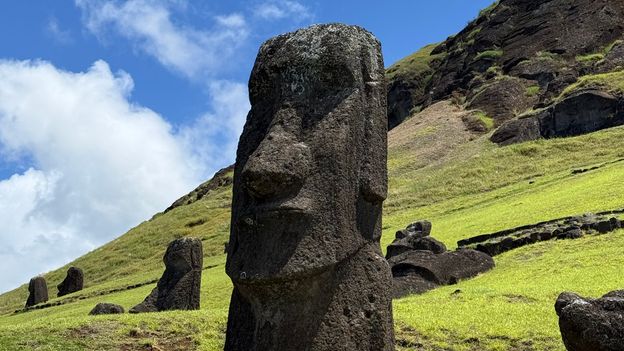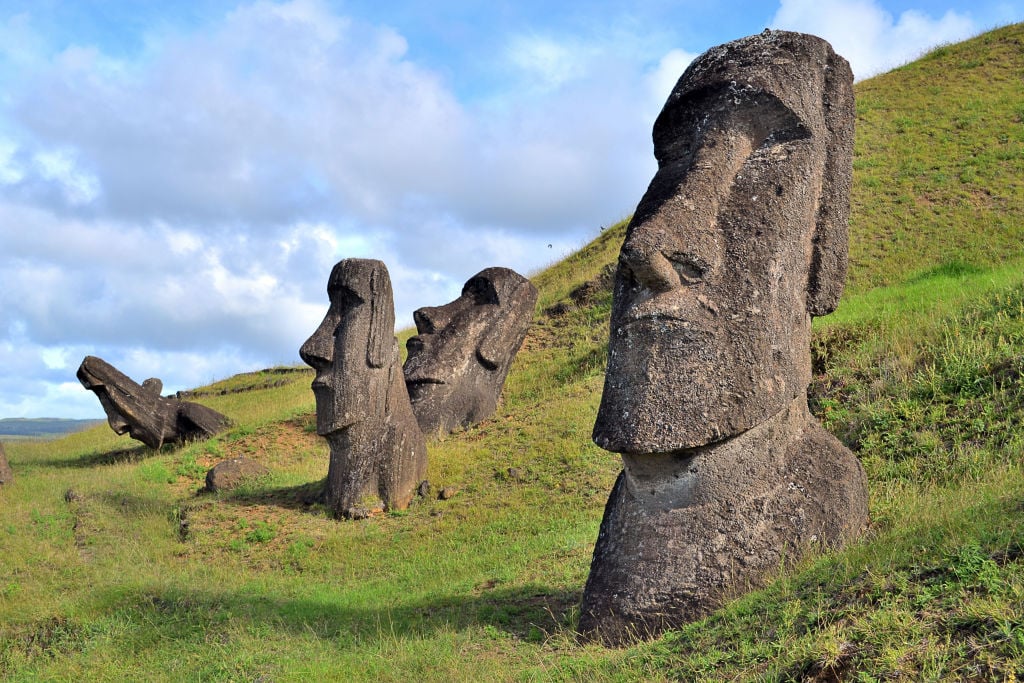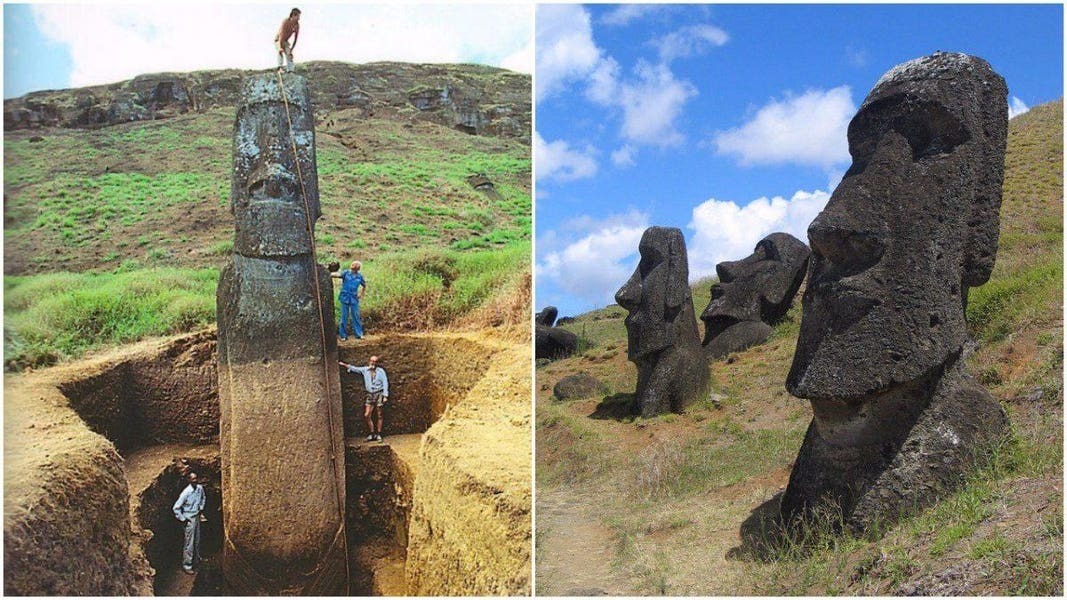What Lies Beneath Easter Island’s Moai: The Real Story of a Hidden Past
For centuries, the monumental stone figures of Easter Island — known as the Moai — have stood watch over the Pacific Ocean, their serene faces carved from volcanic rock and their origins steeped in mystery. But modern archaeology has revealed that these world-famous statues hide more than anyone ever imagined.
The Faces That Weren’t Just Faces

For decades, popular images showed only the heads of the Moai rising from the ground, leading many to believe that the figures were carved that way. Yet when archaeologists from the Easter Island Statue Project began systematic excavations in the early 2010s, they discovered something astonishing beneath the surface: the Moai have full bodies.
Buried under centuries of soil, volcanic ash, and plant growth, the statues’ torsos stretch nearly 20 feet beneath the ground. The team also uncovered carved petroglyphs and inscriptions on the bodies’ backs — geometric patterns and sacred symbols unique to the island’s culture. These findings provided a vivid new perspective on the Moai as complex spiritual creations, not just giant heads gazing out to sea.
Why They Were Buried

The mystery of why most Moai appear buried turns out to have a practical explanation. Erosion from centuries of heavy rainfall and volcanic activity caused sediment to build up, gradually covering the figures’ lower halves. In some locations, this process was accelerated by ancient quarrying work at Rano Raraku, where the statues were carved and partially buried as they awaited transport.
Contrary to myths, there is no evidence that the statues were intentionally entombed or hidden. Instead, nature itself sealed them in time — protecting their lower portions from weathering and preserving their carvings in remarkable condition.
The Genius of Rapa Nui Engineering

Excavations have also revealed just how advanced the Rapa Nui people — the island’s original Polynesian inhabitants — were in their engineering and artistry. Carved from compressed volcanic tuff, each statue weighs between 10 and 90 tons. Archaeologists believe the Moai were moved using a sophisticated system of ropes and balance, “walking” upright through coordinated human effort.
The discovery of entire bodies, along with burial platforms called ahu, has deepened understanding of how the Rapa Nui honored their ancestors. The Moai were not merely art; they were embodiments of lineage and power, designed to connect the living with the spiritual realm.
Myths vs. Modern Discoveries

Over the years, Easter Island has inspired endless speculation — from alien intervention to vanished global civilizations. But the real story emerging from scientific research is even more remarkable. Ground-penetrating surveys and radiocarbon dating have confirmed that the earliest Moai were carved between 1100 and 1500 CE, consistent with the timeline of Polynesian migration across the Pacific.
While the carvings on the statues’ backs remain partly mysterious, they are linked to the island’s Rongorongo script, a still-undeciphered form of writing unique to Rapa Nui. Scholars continue to study whether these symbols recorded genealogies, rituals, or historical events.
The Legacy Beneath the Stone

What the excavations have revealed is not a lost world, but the ingenuity of an island civilization that achieved extraordinary feats of engineering, art, and spirituality in isolation.
As archaeologist Jo Anne Van Tilburg, director of the Easter Island Statue Project, said: “The people who built the Moai were ingenious engineers and devoted artists. What we uncover here is not myth — it’s the enduring story of human creativity.”
The Moai of Easter Island still guard their secrets, but one truth now stands clear: their mystery isn’t about what lies beneath them, but about the civilization that raised them — a people whose legacy continues to speak through every carved face and buried stone.
Sources
-
BBC News – Archaeologists uncover the buried bodies of Easter Island statues
-
National Geographic – The Real Story Behind Easter Island’s Moai Statues
-
Smithsonian Magazine – What Lies Beneath Easter Island’s Moai Statues
-
Easter Island Statue Project – Archaeological Excavation Reports
